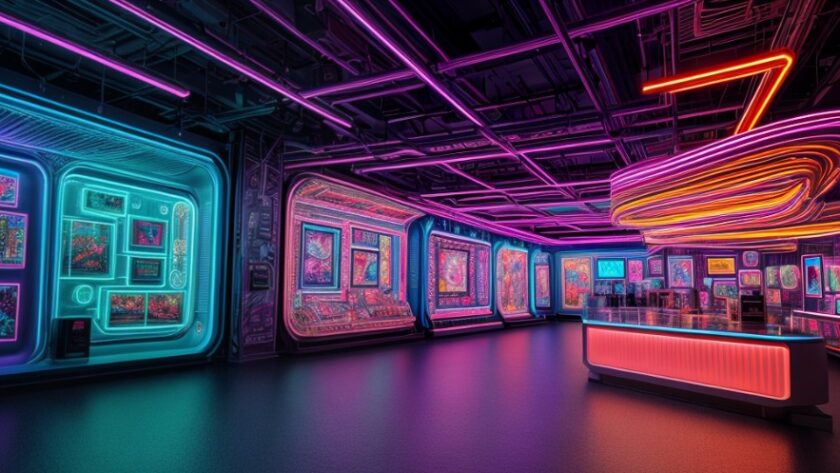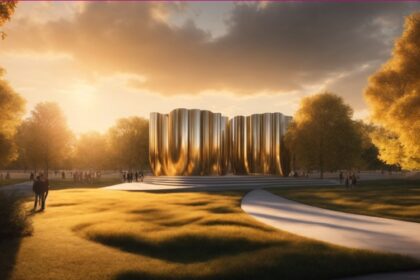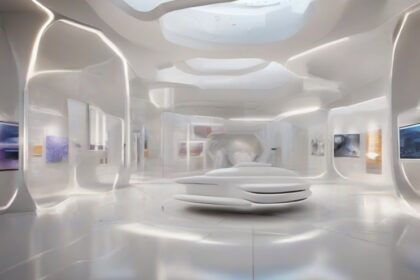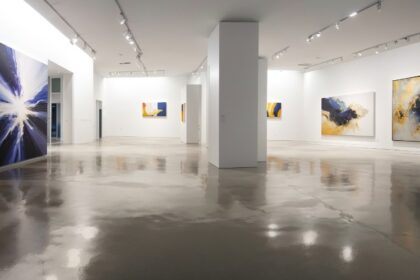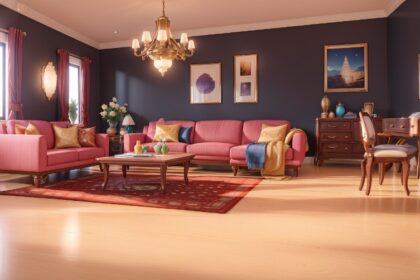In the ever-evolving landscape of artistic expression, the marriage of traditional craftsmanship and cutting-edge technology has given birth to a new realm of possibilities. At the forefront of this revolution stands 3D modeling, a tool that has become indispensable in the creation of breathtaking artistic installations. This digital sculpting technique has not only streamlined the design process but has also opened doors to previously unimaginable forms and structures.
The impact of 3D modeling on artistic installations is profound, touching every aspect from conception to execution. In 2023, a survey conducted by ArtTech Quarterly revealed that 78% of installation artists now incorporate some form of 3D modeling in their creative process. This staggering statistic underscores the transformative power of this technology in the art world.
The Digital Canvas: Redefining Artistic Boundaries
3D modeling software serves as a digital canvas, allowing artists to manipulate virtual space with unprecedented freedom. Unlike traditional sketching or physical model-making, 3D modeling offers infinite undo capabilities and the ability to view creations from any angle instantaneously. This flexibility empowers artists to experiment boldly, pushing the boundaries of their imagination without the constraints of physical materials.
One of the most striking examples of this newfound artistic liberty is the “Nebula Nexus” installation by digital sculptor Maya Chen. Unveiled at the Tate Modern in 2024, this ethereal piece consists of intricate, intertwining forms that seem to defy gravity. Chen spent over 3,000 hours crafting the installation in virtual space before a single physical component was created. The result is a mesmerizing structure that appears to float in mid-air, captivating viewers with its otherworldly presence.
Precision in Complexity: The Mathematical Advantage
The precision afforded by 3D modeling software is nothing short of revolutionary. Artists can now work with micron-level accuracy, creating complex geometries that would be nearly impossible to achieve through traditional means. This mathematical advantage has given rise to a new genre of installation art that blurs the line between sculpture and architecture.
Take, for instance, the “Fractal Forest” installation by computational artist Dr. Elias Vega. This monumental piece, standing at 12 meters tall and spanning 30 meters in diameter, is composed of over 50,000 individual components. Each element is a unique 3D-printed form, generated through complex algorithms and refined using advanced modeling techniques. The installation’s intricate patterns are inspired by natural fractals, creating a mesmerizing visual experience that changes as viewers move through the space.
Virtual Prototyping: Minimizing Risk, Maximizing Impact
One of the most significant advantages of 3D modeling in artistic installations is the ability to create virtual prototypes. This process allows artists and designers to visualize and refine their concepts long before committing to physical materials. In doing so, they can identify potential issues, optimize structural integrity, and even simulate how light and shadow will interact with the final piece.
The “Luminous Labyrinth” installation by light artist Sophia Nguyen serves as a prime example of the power of virtual prototyping. This immersive light sculpture, which debuted at the Singapore Biennale in 2025, consists of over 10,000 individually programmable LED nodes suspended within a complex geometric framework. By creating a detailed 3D model and running light simulations, Nguyen was able to perfect the placement of each LED and predict how the installation would interact with its environment. This meticulous planning resulted in a breathtaking experience that has been hailed as a masterpiece of contemporary light art.
Collaborative Creation: Breaking Down Geographic Barriers
3D modeling has also revolutionized the collaborative aspect of artistic installation design. With cloud-based platforms and real-time rendering capabilities, artists, engineers, and fabricators can work together seamlessly, regardless of their physical location. This global collaboration has led to the creation of truly international installations that draw upon diverse cultural influences and technical expertise.
The “Harmonic Convergence” installation, unveiled at the 2026 Venice Biennale, exemplifies this new paradigm of collaborative creation. Designed by a team of artists and engineers from five different continents, this kinetic sculpture responds to environmental data collected from sensors around the world. The entire design process was conducted virtually, with team members contributing to a shared 3D model that evolved in real-time. The result is a mesmerizing fusion of global data visualization and sculptural form that would have been inconceivable without the power of 3D modeling and remote collaboration.
Material Exploration and Sustainability
3D modeling has also opened up new avenues for material exploration and sustainability in artistic installations. By simulating different material properties within the digital environment, artists can experiment with unconventional combinations and predict how they will behave in the physical world. This capability has led to the creation of installations that push the boundaries of material science while also addressing important environmental concerns.
The “Biomimic Pavilion” by eco-artist Dr. Aisha Patel is a groundbreaking example of this approach. Using advanced 3D modeling techniques, Patel designed a structure that mimics the efficiency of natural forms found in coral reefs. The installation is composed of biodegradable materials that were optimized for strength and minimal waste through iterative digital simulations. As a result, the “Biomimic Pavilion” not only serves as a stunning piece of public art but also functions as a living laboratory for sustainable design practices.
Bridging the Digital and Physical Realms
Perhaps one of the most exciting developments in the field of 3D-modeled artistic installations is the emergence of augmented reality (AR) components. By incorporating digital elements that can be viewed through smartphones or AR glasses, artists are creating hybrid experiences that blur the line between the physical and virtual worlds.
The “Quantum Dreamscape” installation by tech-artist duo Zhang and Kowalski exemplifies this cutting-edge approach. Visitors to the physical installation, which consists of abstract sculptural forms, can use an AR app to reveal an additional layer of animated digital content. This seamless integration of tangible and intangible elements creates a multi-dimensional experience that challenges traditional notions of space and reality.
Education and Accessibility: Democratizing Artistic Creation
The rise of 3D modeling in artistic installations has had a profound impact on art education and accessibility. As software becomes more intuitive and affordable, a new generation of artists is emerging, unbounded by traditional barriers to entry. Online platforms and virtual galleries now allow artists to showcase their 3D-modeled installations to a global audience, democratizing the art world in unprecedented ways.
The annual “Digital Dreamers” exhibition, launched in 2024, has become a cornerstone of this movement. Open to artists of all backgrounds, the exhibition features 3D-modeled installations that exist purely in virtual space. In its inaugural year, the exhibition received over 10,000 submissions from 120 countries, highlighting the global reach and accessibility of this new artistic medium.
Conclusion: A New Dimension of Creativity
As we stand on the cusp of a new era in artistic expression, the importance of 3D modeling in creating artistic installations cannot be overstated. This powerful tool has not only enhanced the precision and complexity of physical artworks but has also given birth to entirely new forms of creative expression that transcend the limitations of the physical world.
From the intricate geometries of “Fractal Forest” to the global data visualization of “Harmonic Convergence,” 3D modeling has enabled artists to realize visions that were once confined to the realm of imagination. As technology continues to evolve, we can only anticipate even more groundbreaking installations that challenge our perceptions and expand the boundaries of artistic possibility.
The fusion of art and technology through 3D modeling is more than just a trend; it’s a fundamental shift in the creative process. As artists continue to explore this digital frontier, we are witnessing the birth of a new artistic language—one that speaks fluently in the dialects of both the physical and virtual worlds. The future of artistic installations is here, and it’s being sculpted in the limitless space of 3D modeling software.
